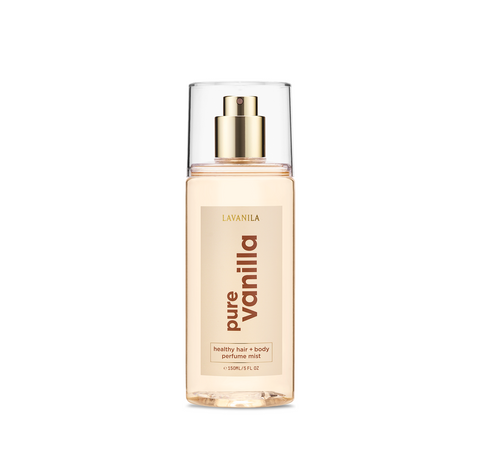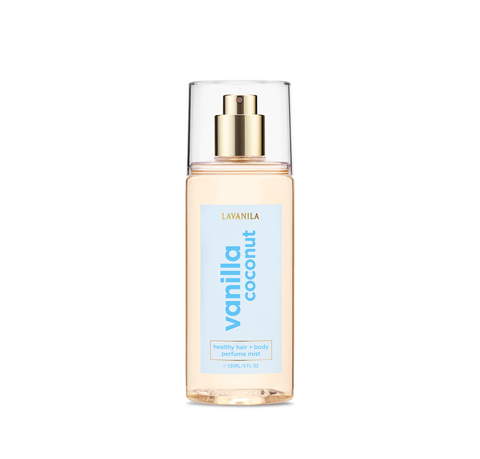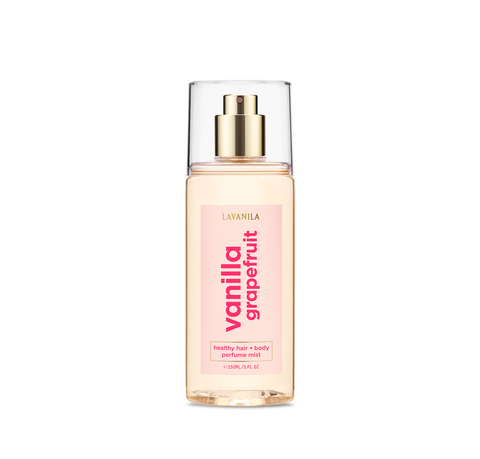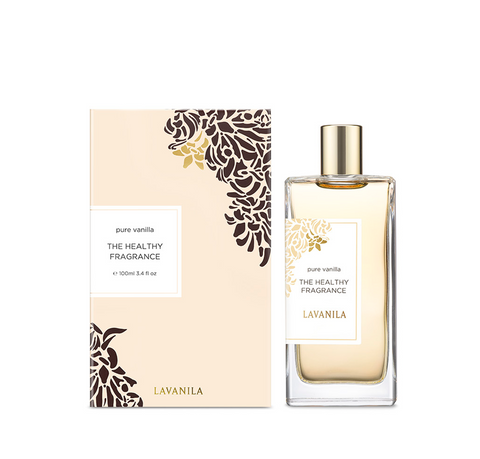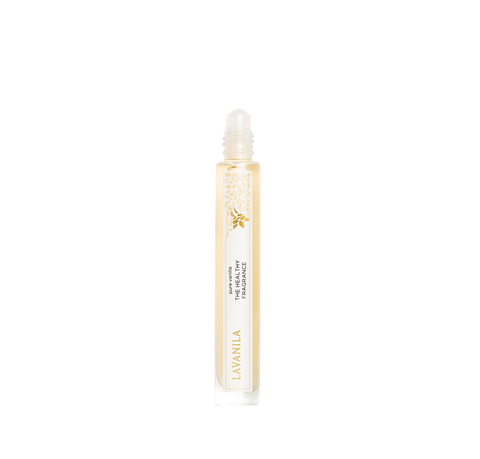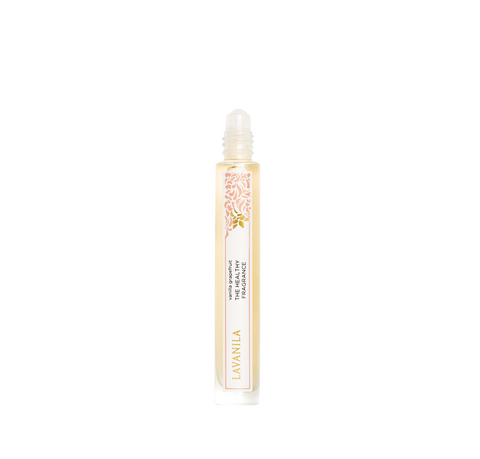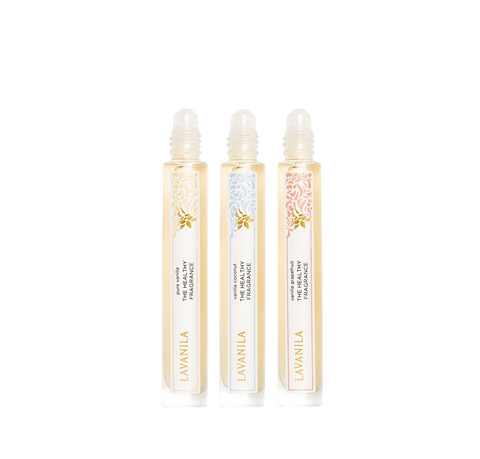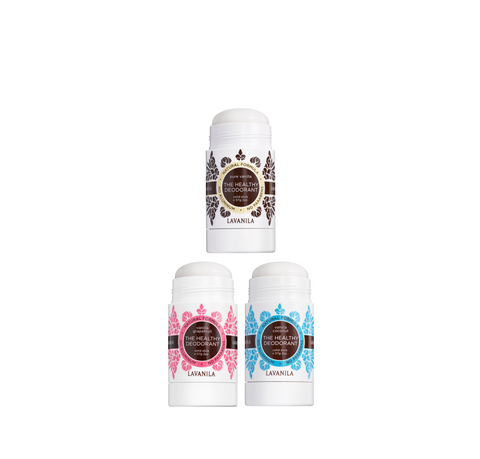Naturally derived fragrance is showing up on more product pages and in more ingredient conversations than ever before. If you’re asking what is naturally derived fragrance and why it matters, this guide will answer that plainly. Naturally derived fragrance describes scents built mainly from plant sources and nature-derived materials, and knowing what that term means helps you choose safer, cleaner products for daily wear. Understanding what does naturally derived fragrance mean makes it easier to spot vague labeling and avoid ingredients that can irritate skin, worsen indoor air, or cause long-term concern. In short: learning what is naturally derived fragrance helps you pick scents that fit a clean-beauty lifestyle without sacrificing the scent experience.
15% Discount on Your First Order
Subscribe for exclusive sales and promo codes
- Enjoy a 15% discount on your first purchase
- Be the first to know about our special sales and promotions
- Receive unique promo codes available only to our subscribers
What Is Naturally Derived Fragrance?
Defining naturally derived fragrance in simple terms
At its core, naturally derived fragrance describes a scent formula where the majority of aromatic raw materials come from plants or other natural sources. When someone asks what is naturally derived fragrance, the short answer is that it means most of the scent molecules are derived from botanicals (flowers, peels, woods, resins) or are nature-derived versions of scent components rather than purely synthetic chemicals. Naturally derived fragrance can be made through standard perfumery techniques, but it emphasizes plant-based extracts, essential oils, absolutes, and nature-derived carriers.
This definition helps separate naturally derived fragrance from formulas that rely mostly on lab-made aroma molecules. Naturally derived fragrance does not promise zero risk — essential oils can still irritate — but it points you to ingredients that tend to have clearer sourcing and more transparent safety profiles. When you’re learning what does naturally derived fragrance mean, think: plant-first, transparent sourcing, and nature-rooted scent building.
How it differs from conventional synthetic fragrance
Conventional synthetic fragrance often uses lab-made aroma chemicals to create specific notes, to boost longevity, and to ensure consistency across batches. Those powerful tools let perfumers create striking effects, but they can include materials that are more likely to persist in indoor air or to act as sensitizers for some people.
By contrast, naturally derived fragrance focuses on botanical extracts and nature-derived alcohols and carriers. The difference is both in composition and in intent: naturally derived fragrance prioritizes ingredients that are traceable to plant sources and avoids many petrochemical-derived fixes. That makes naturally derived fragrance a clearer choice for people asking is naturally derived fragrance safe and for those who want a closer connection between the scent they wear and the raw materials behind it.
What Does Naturally Derived Fragrance Mean in Everyday Use?
The role of plant-based extracts and essential oils
Practically speaking, naturally derived fragrance means you’ll see essential oils, absolutes, hydrosols, and plant extracts high in the ingredient list. These materials are produced by traditional extraction methods — steam distillation, cold pressing, or solvent extraction for fragile flowers — and they carry the complex notes that people love in botanical scents.
When you choose a product labeled with naturally derived fragrance, you’re usually choosing a scent built from recognizable plant sources: citrus peels for bright tops, floral absolutes for heart notes, and warm woods or resins for bases. That approach gives naturally derived fragrance its layered, evolving character and makes the scent feel more “alive” on skin. Lavanila’s Healthy Fragrance collection uses organic sugarcane alcohol and pure essential oils in its formulations, which is one example of naturally derived fragrance used in finished products.
Safe, recognizable ingredients you can trust
A big advantage of naturally derived fragrance is ingredient familiarity. Many plant extracts are well-studied, and consumers can often recognize names like lavender oil, bergamot, or vanilla extract. That visibility makes it easier to avoid specific allergens or botanicals you know disagree with your skin. It also makes product pages and labels more meaningful: when a company lists the botanical building blocks behind a scent, you can make an informed choice rather than guessing what “fragrance” hides.
If your priority is clarity — knowing what you’re applying to your skin and breathing into your home — naturally derived fragrance often makes that decision simpler. It’s not a guarantee of zero reaction, but it reduces the unknowns that come with undisclosed synthetic mixes.
Is Naturally Derived Fragrance Safe for All Users?
How gentle formulas benefit sensitive skin
People commonly ask is naturally derived fragrance safe because they want a simple rule: natural is safer. The reality is nuanced. Naturally derived fragrance can be safer for many users because it avoids some of the petrochemical-derived aroma fixatives and ambiguous “fragrance” mixes that are often linked to irritation. That said, natural materials can still be sensitizers — certain citrus oils or oxidized terpenes can trigger reactions in susceptible people.
What makes naturally derived fragrance kinder for sensitive skin is how it’s formulated: clean, low-fragrance loadings, stable botanical extracts, and soothing carriers that support the skin barrier. Brands using naturally derived fragrance thoughtfully will often pair essential oils with skin-friendly bases and test for irritation, giving you a gentler daily-wear option.
Clinical reviews and dermatology studies show that fragrance ingredients are a common cause of contact allergy, which is exactly why people check is naturally derived fragrance safe before switching. Choosing formulas that list botanicals and use gentle concentrations reduces risk for many users.
Safer options for families and daily wear
For families and daily-wear routines, naturally derived fragrance offers two practical advantages. First, plant-derived carriers and nature-based alcohols tend to evaporate cleanly and leave fewer persistent residues in indoor air. Second, the transparency that often comes with naturally derived fragrance — explicit listings of key botanicals — lets parents and caregivers avoid known allergens for children or infants.
If daily safety and comfort matter, pick naturally derived fragrance products with clear labels, low fragrance concentrations, and a track record of safety testing. That approach helps answer the shopping question what does naturally derived fragrance mean for busy households: it means a scent you can wear the way you want — with less worry.
The Problems With Conventional Synthetic Fragrance
Hidden chemicals behind “fragrance” or “parfum”
One of the biggest drawbacks of conventional synthetic fragrance is labeling opacity. Many products list “fragrance” or “parfum” as a single line item, and that umbrella term can hide dozens of individual chemicals, including phthalates or synthetic musks. That lack of disclosure makes it hard to answer the question what is naturally derived fragrance by comparison — you can’t compare if one label hides its raw materials and another names them.
This ambiguity is not just frustrating; it’s a safety issue. Consumers with allergies, pregnant people, or those managing chronic respiratory conditions need clear ingredient information to make safe choices. Naturally derived fragrance addresses that problem by encouraging clearer sourcing and by using materials consumers can identify.
Potential risks for skin, air quality, and wellness
Synthetic fragrance ingredients can contribute to three practical risks: skin sensitization, indoor air irritation, and cumulative exposure concerns. Fragrance ingredients are a known cause of allergic contact dermatitis for a measurable share of the population; patch testing studies show a consistent prevalence of fragrance sensitivity. Repeated exposure to VOCs from fragranced products can also affect indoor air quality, a concern highlighted by public health agencies when VOC levels indoors exceed outdoor background levels.
Beyond these immediate effects, some synthetic ingredients — notably certain phthalates and persistent musks — have been examined for potential endocrine or environmental impacts. That doesn’t mean every synthetic note in perfumery is harmful, but it does explain why many consumers ask is naturally derived fragrance safe and why they often favor plant-forward alternatives that reduce exposure to questionable groups. Reliable product pages and ingredient transparency make that safer path easier to follow.
 Lavanila’s aloe-based mists offer a clean, gentle way to adapt with the seasons while nourishing your hair and uplifting your senses all year long.
Lavanila’s aloe-based mists offer a clean, gentle way to adapt with the seasons while nourishing your hair and uplifting your senses all year long.
How naturally derived fragrance is created
When people ask what is naturally derived fragrance, the short answer is that it begins at the plant. Naturally derived fragrance starts with botanical raw materials — peels, flowers, woods, resins, and seeds — and follows a careful path from harvest through extraction, testing, and blending. Making a safe, wearable naturally derived fragrance is both art and science: the perfumer chooses high-quality botanicals, extracts their aromatic compounds with the right method, and then blends them into a formula that smells beautiful on skin and meets safety standards.
This process matters because what does naturally derived fragrance mean in practice depends on every step: sourcing, extraction, and formulation. A plant-sourced oil that is poorly handled can oxidize and become more irritating. A cleanly extracted essential oil that is properly standardized and blended creates a naturally derived fragrance that is more predictable, safer for daily wear, and easier to explain on a product page.
From botanical source to safe, wearable scent
The first stage is sourcing. Farmers and cooperatives grow the raw botanicals — citrus orchards, rose fields, vanilla vines, and resin-producing trees. Good sourcing means attention to harvest time, botanical cultivar, and post-harvest handling. These details shape the aromatic profile. For example, vanilla from Madagascar yields a different vanillin-rich aroma than vanilla from other regions, which is why many naturally derived fragrance lines call out origin. Lavanila highlights Madagascar vanilla as a signature botanical in its formulations, which reflects that same attention to source and quality.
After harvest, the plant material is processed using techniques selected to preserve the aroma and minimize unwanted residues. Extracts are tested for purity and contaminants, and perfumers evaluate how each extract will behave on skin. A naturally derived fragrance that is meant for daily wear must be mixed with safe carriers and at safe concentrations. Formulation teams run stability and irritation tests to ensure the final scent remains consistent, gentle, and long-lasting without adding problematic synthetics.
Because consumers increasingly ask is naturally derived fragrance safe, reputable brands document these steps. Clear product pages that list botanicals, carriers, and testing approaches give shoppers the information they need to judge safety and suitability for sensitive skin.
Transparency and ingredient integrity in the process
Transparency is a key part of what makes a naturally derived fragrance meaningful. When a brand can name the botanical extracts, their origins, and the processing steps, consumers can understand what they are applying. Ingredient integrity means vetting suppliers, verifying organic or fair-trade claims when used, and refusing materials that don’t meet safety standards.
Many clean-fragrance brands publish ingredient pages that explain sourcing and evaluation processes. Lavanila, for instance, outlines a multi-step evaluation of performance, safety, sourcing, and environmental impact and describes the brand’s effort to exclude a large list of undesirable ingredients across its portfolio. This kind of public commitment helps answer the question what does naturally derived fragrance mean for shoppers who want verified, plant-forward formulas.
The science of extracting natural scents
Extraction is where raw plant material becomes the ingredients perfumers use. The method chosen affects the chemical makeup, scent nuance, and safety profile of the resulting extract. Understanding these methods is essential for anyone asking what is naturally derived fragrance: different extraction techniques produce different kinds of naturally derived fragrance building blocks.
Common methods like steam distillation and cold pressing
There are several common extraction methods used to create botanical extracts that form a naturally derived fragrance:
-
Steam distillation: The workhorse for many essential oils. Steam pulls volatile aroma compounds from plant material; those compounds condense and separate to yield an essential oil. Steam distillation works well for many herbs and woods.
-
Cold pressing (expression): Used primarily for citrus peels. This mechanical pressing captures fresh, bright top notes that are characteristic of citrus oils.
-
Solvent extraction and CO₂ extraction: For very delicate flowers like jasmine or tuberose, solvent extraction or supercritical CO₂ extraction yields concretes and absolutes that capture the nuanced heart notes. CO₂ extraction can provide a solvent-free extract with a unique aromatic profile.
-
Enfleurage and maceration (traditional): Older but still relevant for fragile flowers. Enfleurage captures aroma using fat; the fat is then processed to extract the aromatic compounds. It’s rare today but historically important.
Each method shapes the final naturally derived fragrance. For example, cold-pressed citrus oils often contain different phototoxic constituents than distilled citrus fractions, which matters for topical safety and formulation choices.
Why extraction impacts purity and safety
Extraction method affects purity and the potential for residual contaminants. Solvent extractions must be handled so no harmful solvent residue remains. Steam-distilled oils can oxidize if not stored properly. CO₂ extracts are prized because they can capture a broad aromatic range with minimal solvent residue, making them attractive for naturally derived fragrance lines.
Testing is essential. Good suppliers and brands test extracts with tools like gas chromatography–mass spectrometry (GC-MS) to verify chemical profiles, check for pesticide residues, and quantify known allergens. This is why the question what does naturally derived fragrance mean in real terms is partly about the testing protocols behind the scenes. Brands that publish testing and sourcing information reduce uncertainty and make it simpler for consumers to answer the question is naturally derived fragrance safe.
A short checklist for extraction-related safety:
-
Verify extraction method and solvent use.
-
Check for GC-MS testing and pesticide screening.
-
Confirm storage and antioxidant use to limit oxidation.
These steps are part of the quality chain that turns plant material into a naturally derived fragrance suitable for daily wear.
Why naturally derived fragrance fits modern wellness goals
Naturally derived fragrance aligns with modern priorities: cleaner labels, fewer unknown chemicals, and a closer connection between product and source. When people ask is naturally derived fragrance safe, they’re also asking whether those fragrances fit a lifestyle that values health, sustainability, and transparency.
Supporting clean beauty and health-conscious lifestyles
Clean beauty is about reducing exposure to unnecessary or concerning chemicals while keeping performance and enjoyment. Naturally derived fragrance supports that by favoring botanicals and nature-derived carriers that people recognize and often trust. Consumers who want to know what is naturally derived fragrance often prioritize ingredients they can pronounce and sources they can trace.
That doesn’t remove all risk — natural materials can still irritate — but it reduces the number of undisclosed petrochemical aroma chemicals and obscure fixatives. For many users, naturally derived fragrance delivers the sensory benefits of perfume with fewer unknowns, making it a natural fit for daily wellness routines and for people asking is naturally derived fragrance safe for regular use.

cruelty free

paraben free

phthalate free

all natural fragrance
Aligning with sustainable, eco-friendly practices
Sustainability is another driver. Naturally derived fragrance that is responsibly sourced can be more biodegradable and less likely to introduce persistent petrochemical residues into the environment. Ethically sourced botanicals and transparent supply chains reduce the risk of overharvesting and support fair practices in grower communities. For example, calling out Madagascar vanilla on a product page signals both a botanical choice and an origin story that brands can steward responsibly.
Brands that commit to a rigorous ingredient review — excluding hundreds of problematic materials — show how the question what does naturally derived fragrance mean becomes a practical set of standards: traceable botanicals, tested extracts, and a lower likelihood of persistent synthetic residues. That alignment with wellness and sustainability helps consumers choose fragrances that match their values and daily health goals.
Comparing Naturally Derived Fragrance vs. Synthetic Options
When people ask what is naturally derived fragrance they usually want to know how it stacks up against classic synthetic perfume. The short answer: both can smell beautiful, but they’re built and tested very differently. Naturally derived fragrance is made mostly from plant sources and nature-derived materials. Synthetic options are built from lab-made aroma molecules. That difference changes how the scent feels on skin, how it ages, and how it affects long-term comfort.
Naturally derived fragrance tends to lean on whole-plant extracts, resins, and essential oils. Synthetic options often use manufactured molecules to extend life and to recreate very specific notes. That can mean synthetic blends are more consistent from bottle to bottle, while naturally derived fragrance can be more complex and variable — and often easier to trace back to a plant source.
Which Is Better for Long-Term Skin Comfort
Long-term skin comfort is about cumulative exposure, barrier health, and repeated reactions. Studies and dermatology reports show that fragrance ingredients — natural or synthetic — can cause contact allergy in some people. Choosing naturally derived fragrance, when it’s formulated carefully, can lower exposure to obscure petrochemical fixatives and undefined “fragrance” mixes that are often linked to sensitization.
A few practical differences matter:
-
Naturally derived fragrance often lists recognizable botanical ingredients, which helps people avoid known triggers.
-
Synthetic perfumes sometimes include long-lasting petrochemical anchors that can hang around on skin or in dust and, for some people, increase irritation risk.
-
Formulation approach matters more than the label: a gentle, low-fragrance-load naturally derived fragrance tends to be kinder for daily use than a high-load synthetic perfume.
If your priority is everyday wear and minimal skin reactivity, a thoughtfully made naturally derived fragrance is usually the safer pick — particularly for people with sensitive skin or a history of fragrance sensitivity.
Understanding Longevity Without Harsh Chemicals
A common worry is that naturally derived fragrance won’t last. That’s not always true. Longevity comes from smart raw-material choices and skilled formulation. Naturally derived fragrance can use plant resins (amber, benzoin, labdanum), absolutes, and nature-derived carriers that act as gentle fixatives. These ingredients help scent linger without leaning on heavy petrochemical fixatives. Careful blending and using a slightly higher concentration of safe botanicals also extend wear.
At the same time, naturally derived fragrance often evolves more on the skin — it may smell more “alive” and change over time. That shift is a feature, not a flaw, for many people who prefer how plant-based notes open and settle. If you want lasting scent without harsh chemicals, look for formulas that call out their plant-resin or absolute content and list how they build longevity from natural materials.
The Benefits of Choosing Lavanila’s Naturally Derived Fragrances
Choosing a naturally derived fragrance can be a personal wellness decision. From Lavanila’s perspective, that choice is about pairing sensory pleasure with safety and clear sourcing. Our goal is to offer naturally derived fragrance that performs while avoiding unnecessary, poorly disclosed chemicals. We focus on plant-forward blends, clean carriers, and clear product pages that tell the story behind each scent.
Clean, Transparent Ingredient Philosophy
Transparency is the backbone of a trustworthy naturally derived fragrance. Lavanila emphasizes ingredient clarity — naming botanical building blocks and explaining how we source and process them. That means our product pages list key extracts and carriers rather than hiding a formula behind a single “fragrance” line. This approach helps people answer the question what does naturally derived fragrance mean in practice: it means traceable botanicals, verified carriers, and a clear rationale for each ingredient choice.
Signature Lavanila Scents Designed for Wellness
Lavanila’s signature Naturally Derived Fragrance collection includes scents like Pure Vanilla and Vanilla Grapefruit, which showcase plant-first composition using high-quality vanilla and citrus extracts with nature-derived alcohol and essential oils. These formulas are crafted for daily wear and for people who want scent without unnecessary synthetic anchors. The result is a softer sillage, a skin-friendly finish, and a scent story you can trace — which is exactly what many shoppers mean when they ask is naturally derived fragrance safe.
How to Identify Truly Naturally Derived Fragrance on Labels
Finding authentic naturally derived fragrance means learning what to look for on the label and on the product page. A few clear signals separate honest formulations from vague marketing.
Key Terms and Certifications to Look For
When you read a label or product page, watch for these reliable signals:
-
A full ingredient list that names botanical extracts (for example: Vanilla Planifolia oil, Citrus paradisi peel oil).
-
Terms like absolute, CO₂ extract, or essential oil, which indicate specific plant extraction methods.
-
Clear carrier identification such as organic sugarcane alcohol or nature-derived alcohol.
-
Recognized certifications when applicable: USDA Organic (for organic aroma ingredients), COSMOS or ECOCERT (for certified natural/organic cosmetics), and cruelty-free labels for ethical sourcing.
-
Evidence of safety testing (patch tests, stability testing) or an ingredient policy on the brand site.
These clues help you tell whether a product actually fits the idea of naturally derived fragrance rather than just leaning on the word “natural” for marketing.
Avoiding Greenwashing in the Fragrance Market
Greenwashing is common. Brands can use plant photos, a single botanical ingredient, or vague claims to imply a product is fully natural when it is not. To avoid that trap:
-
Don’t trust words alone — read the ingredient list.
-
If the label uses “fragrance” or “parfum” without clarification, ask for a full breakdown on the product page.
-
Look for origin stories and testing data. Real naturally derived fragrance makers discuss sourcing, extraction, and testing; superficial marketers focus on imagery and feel-good phrases.
A quick rule of thumb: a true naturally derived fragrance will let you see what’s in the bottle and why each ingredient is there.
The Future of Fragrance Is Naturally Derived
Trends show consumers want cleaner, clearer formulas, and the industry is responding. Demand for clean beauty and naturally derived fragrance is rising fast, driven by more informed shoppers and stricter regulations. Market reports project steady growth in the clean-beauty space as people favor safer, traceable ingredients.
Shifting Consumer Demand Toward Safer Formulas
People increasingly ask what is naturally derived fragrance because they want to reduce exposure to hidden chemicals and to support brands that prioritize health and sustainability. This shift is not just a fad — it’s reshaping product development, packaging choices, and the kinds of raw materials perfumers use. As consumers demand clarity, more brands are investing in traceable botanicals, third-party certifications, and cleaner manufacturing.
How Brands Like Lavanila Lead the Way
Brands that take naturally derived fragrance seriously do three things: they commit to transparent ingredient lists, they source botanicals responsibly, and they design formulas with gentle carriers and fewer questionable synthetics. Lavanila’s product pages and fragrance collection show that a brand can deliver sensory luxury while keeping ingredient clarity front and center. When you want to know is naturally derived fragrance safe, examples of real product pages, ingredient policies, and testing information are the best answers — and that’s the approach Lavanila uses.
Conclusion: Embracing Naturally Derived Fragrance With Confidence
Naturally derived fragrance answers a simple question many people are now asking: What does naturally derived fragrance mean for my daily life? It means scents built from plant sources, made with clear sourcing and extraction methods, and formulated to reduce exposure to poorly disclosed synthetics. For many users, that adds up to a gentler, more transparent way to enjoy fragrance.
Why safer, plant-based scents are the smarter choice: they lower the number of unknown compounds you apply and breathe, often offer clearer labeling, and support sourcing practices that can be kinder to the planet. If your priority is daily comfort, family-friendly air quality, or long-term skin health, naturally derived fragrance is a practical, elegant solution.
Explore Lavanila’s collection of naturally derived fragrances to try plant-first scent profiles with clear ingredient pages and signature blends like Vanilla Coconut and Vanilla Sugarcane. These collections let you experience how naturally derived fragrance can be both beautiful and thoughtfully made.
 Clean and uncomplicated
Clean and uncomplicated

 Featured In
Featured In







vegan

gentle formula

100% recylable

aluminum free
